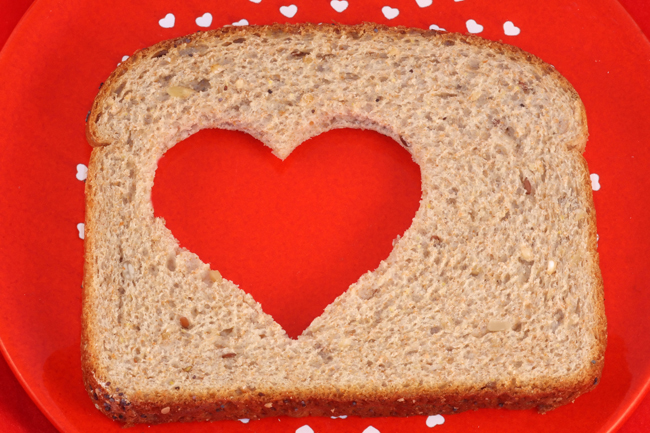Share This
Good news for everyone who ate a bowl of oatmeal or a few pieces of whole wheat toast for breakfast this morning: you may be on your way to a longer life.
Researchers at the Harvard School of Public Health have just published the results of a major study linking higher whole grain intake with lower risk of mortality overall, and specifically with lower risk of death from cardiovascular disease (CVD). While we all have the same overall risk of dying – it’s 100%, folks; no one gets out of this life alive – it appears that people who eat more whole grains may avoid the Grim Reaper longer.
The study, published online in JAMA Internal Medicine on January 5, 2015, followed 118,085 people (74,341 women and 43, 744 men) for “2,727,006 person years” – meaning the foods these men and women ate were tracked with periodic Food Frequency Questionnaires for an average of about 23 years.
This, of course, is not the first research to find that whole grains are good for us; the evidence mounts every month, as the database of studies on the Whole Grains Council’s website attests. (Please use our handy search engine to explore this repository of more than 225 studies!) But there are two things we especially like about the design and execution of this solid new study:
• In-depth Computation of Whole Grain Content of Foods
Many diet studies note simply whether someone ate “brown bread” or “bran cereal” or “wheat toast” which gives pretty squishy results – these foods could be high in whole grain content or low, throwing off results. This study sought out the actual whole grain content, in grams, of various foods by type and by brand name, to arrive at a more accurate picture of just how many grams of whole grain people were likely to be eating, over time.
• Careful Control of Confounding Factors
In research lingo, a confounding factor is something that throws off the accuracy of a study. Let’s say the people who eat the most whole grains also exercise the most. Are they healthier because they eat more whole grains, or because they run marathons? In this case, exercise would be a “confounding” factor, and statistical adjustments would need to be made to remove its effects from the data. All good studies explain – and adjust for – confounders, but this one seems to go further than most to put the data in the Cuisinart over and over and over, chopping it every which way to make sure the conclusions still hold firm.
Two Important Takeaways from this Study
After reading the full study, we wanted to share two important takeaways to inspire you to enjoy more whole grains:
1) Benefits start to kick in at about 14 grams per day. Changing habits is never easy, but this study has good news: big benefits can result from small changes in your eating habits. Graphs (on page E7) show that eating about 14 grams of whole grain a day gives a big boost in benefits although additional whole grain intake beyond that level strengthens the protective effect.
We’re metric-challenged here in the U.S., so let me help you out: 14 grams of whole grain is the amount found in a small slice of 100% whole grain bread, or in about ¼ cup of cooked oatmeal, brown rice or whole wheat pasta. That’s a teeny-weeny amount of whole grain, and yet it’s more than many folks consume. In the study, people with the lowest consumption ate on average only 4.3 grams (women) or 5.8 grams (men) of whole grains per day, while those with the highest consumption clocked in at 35.6 grams (women) or 52.6 grams (men) per day. (Figures cited are for the first quintile and fifth quintile, respectively.)
2) You don’t have to change your whole diet to benefit. Sure we’d like to see everyone reading this blog enjoy the healthiest diet possible, but once again, the study shows that baby steps do make a difference. How do we know? The researchers rated each person in the study on their overall healthy diet (using something called a modified Alternate Healthy Eating Index) and found that even after adjusting for overall healthiness of diet, whole grains were protective in reducing risk of overall and CVD mortality. You don’t have to wait until you’ve cleaned up your whole diet, to benefit from eating more whole grains.
So if your New Year’s Resolution to eat healthier already seems daunting, pick one small target at a time. Start today by adding whole grains to your diet, bit by bit, and reap the benefits. (Check out our list of products using the Whole Grain Stamp; each listing shows how many grams of whole grain are in a serving, getting you to 14 grams or more in a hurry!) Then, when you’ve grown to enjoy the fuller, nuttier taste of whole grains, choose another new habit to bring into your life. We’ll be here, at Oldways, to guide you every step of the way.
- Cynthia


Add a Comment